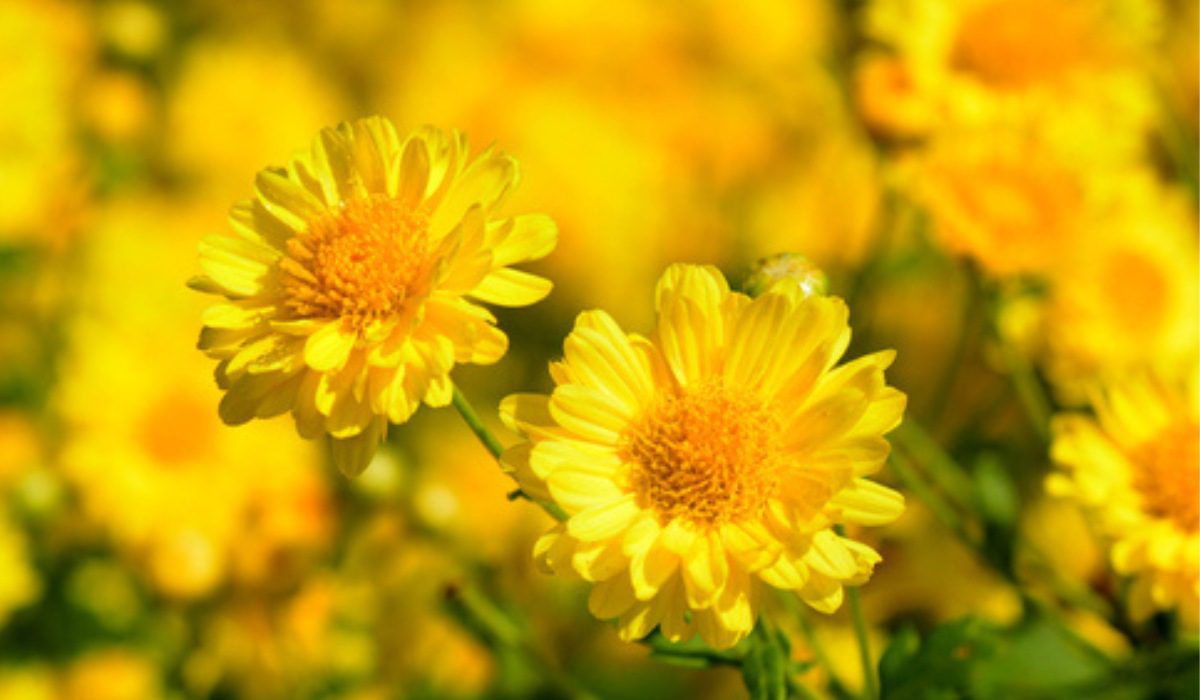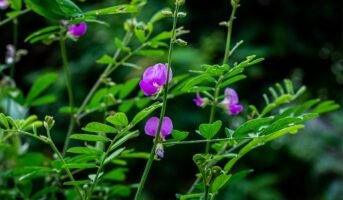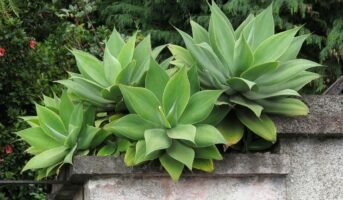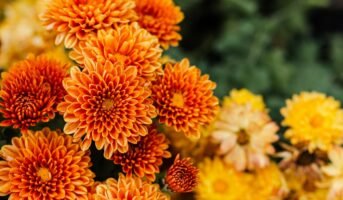The erect, fragrant, perennial Chrysanthemum Indicum grows a clump of stems 25 to 100 cm tall from procumbent rhizomes. It is commonly known as Indian chrysanthemum and is occasionally grown for medical purposes.
Chrysanthemum Indicum has a number of known variants, one of which is Chrysanthemum Indicum var. edule (Kitam). Kitam is grown as a vegetable in China. The plant is sometimes raised for decorative purposes.

Source: Pinterest
see also about: Combretum Indicum
Chrysanthemum Indicum: Key facts
| Family | Asteraceae |
| Common name | Indian Chrysanthemum |
| Propagation | August to October |
| Native | South-east Asia |
| Type | Perennial herb/ shrubs |
| Height | 25-100 cm |
| Flower Size | 9.8 inches in diameter |
See also: What is mint and what are its numerous benefits?
Chrysanthemum Indicum: Genus
Chrysanthemum Indicum belongs to a small Artemisiinae genus called Chrysanthemum. This genus comprises nearly 40 species of flowering plants belonging to the Asteraceae family.
Chrysanthemum Indicum: Native habitat
Chrysanthemum Indicum are native to Asia, particularly China. They are quite widespread in Japan and Korea. Grown primarily in the temperate biome, these plants can be easily found across grasslands on mountain slopes, wet places by rivers, thickets, fields, saline places by seashores, and roadsides.
Chrysanthemum Indicum: Sun tolerance
Chrysanthemum Indicum requires full sun for proper growth and development. They have a high tolerance for heat and sunlight. In fact, they need at least 6-8 hours of sunlight every day to thrive.
Chrysanthemum Indicum: Mature height
Chrysanthemum Indicum are perennial shrubs that grow to a height of up to two feet when fully mature.
Chrysanthemum Indicum: Leaves
The leaves of Chrysanthemum Indicum grow during the spring and early summer. These leaves are broad, deeply cut, and attached to the bushy plant’s fine-haired stems. Their leaves are usually thin with tiny cracks. When it is in full bloom, the leaves are hardly visible and their view is almost completely blocked by the circular flowers.
Chrysanthemum Indicum: Leaf colour
The leaves of Chrysanthemum Indicum are dark green in colour. The colour is darker in perennial Chrysanthemum Indicum as compared to the annual ones.
Chrysanthemum Indicum: Cold tolerance
Chrysanthemum Indicum are quite cold hardy and can tolerate temperatures of around -12 °C to -17 °C.
Chrysanthemum Indicum: Self-pruning characteristic
Chrysanthemum Indicum do not self-prune. As a general rule, only perennial Chrysanthemum Indicum needs to be pruned. Regularly pruning the faded flowers during the flowering period can help the plant produce more flower buds.
Chrysanthemum Indicum: Growth rate
Chrysanthemum Indicum are moderately fast-growing plants that attain their full height of up to two feet in a year or two.
Chrysanthemum Indicum: Cultivation
A temperate zone species called Chrysanthemum Indicum is the ancestor of all domesticated chrysanthemums. Despite having a temperate origin, it can thrive in tropical climates and is frequently planted throughout Southeast Asia. Chrysanthemum Indicum may survive in temperatures as low as -10°C. They thrive in the majority of fertile, well-drained soils in sunny locations.
Chrysanthemum Indicum: Propagation
Sow seeds in a container with just enough soil to cover them. If the Chrysanthemum Indicum does not germinate within 4 weeks, try chilling the seed for three weeks in the salad drawer of a refrigerator. It typically takes 10 to 18 days at 15°C to germinate.
Prick the seedlings out into separate pots when they are big enough to handle them, and then plant them out when they are big enough. While smaller clumps should be potted up and grown on until they have strong roots, larger clumps can be directly replanted into their permanent locations.

Source: Pinterest
Chrysanthemum Indicum: Care tips
Here’s all you need to know about caring for Chrysanthemum Indicum in your garden.
Chrysanthemum Indicum: Water requirements
Since Indian Chrysanthemum prefers consistent and uniform humidity, watering should be done on a regular basis in the spring, summer, and fall. Water the Chrysanthemum Indicum in the morning and irrigate the root zone to a depth of 15 to 20 cm. Pour water on the soil surface as far away from the foliage and stems as possible. Once the soil has frozen in late fall or winter, no water is required.
Chrysanthemum Indicum: Fertiliser requirements
The growth of stems and leaves occurs primarily in the spring and early summer. Fertiliser is beneficial to Chrysanthemum Indicum, and careful fertilisation can increase the number of flowers. From the beginning of the growing season in early spring until buds appear, a water-soluble compound fertiliser should be applied to the root zone once every half-month.
Chrysanthemum Indicum: Sunlight requirements
Chrysanthemum Indicum enjoys sunlight. Every day, make sure it gets at least 6 hours of sunlight. In hot climates, shade flowers at noon to avoid sunburn. The Indian chrysanthemum is a day-length plant. Shorter sunlit days signal late summer in natural growth conditions, and flower buds begin to grow.
Chrysanthemum Indicum: Soil requirements
Chrysanthemum Indicum can survive in most soils with good drainage. Rooting is hampered by overly hard or dry soil. Optimal soil forms a mass in your hand when grabbed and squeezed, then spreads without scattering through your fingers when released. It should not harden into a hard lump.
Chrysanthemum Indicum: Pests and diseases
Here are some useful tips to keep your Chrysanthemum Indicum safe from pests and diseases.
- Choose a trustworthy seedling supplier to ensure pest-free and robust Chrysanthemum Indicum. If the conditions permit, sterilise the soil and flower pot before planting. Pests and diseases can be effectively reduced by taking preventive measures.
- The overall principle of pest and disease prevention in Chrysanthemum Indicum is to maintain proper plant spacing, remove old and weak branches on time, and improve ventilation and sunlight conditions.
- Control the amount of water used, avoid wetting the foliage, and drain the water after it rains.
- Fertilise with caution and avoid using too much fertiliser.
- Clean the garden on a regular basis, and remove and destroy diseased leaves and pests as soon as they are discovered.
- If pests and diseases cannot be controlled through other means, use appropriate pesticides.
Chrysanthemum Indicum: Uses
- Chrysanthemum Indicum as a whole has antiphlogistic, blood tonic, depurative, febrifuge, and vulnerary properties.
- It is used to dissipate heat, detoxify, and remove blood stasis. Chrysanthemum Indicum is used to treat eye problems in China.
- It is used in the treatment of gonorrhoea in conjunction with black pepper. The leaves of Chrysanthemum Indicum are purifying. They are used to treat migraines in China.
- Antibacterial, aperient, bitter, hypotensive, stomachic, and vasodilator properties are found in the Chrysanthemum Indicum flowers.
- Photopsia, vertigo, fever, headache, ophthalmia, dacryolithiasis, xerophthalmia, amblyopia, and hypertension are all treated with a decoction of Chrysanthemum Indicum.
- The plant’s essential oil contains chrysanthenone, which acts on the brain centre affected by Parkinson’s disease.
Chrysanthemum Indicum: Toxicity
Cats, dogs, rodents, and even grazing animals are poisoned by Chrysanthemum Indicum. All parts of the plant have the potential to cause severe poisoning symptoms.
See also: 21 best flowers for your garden
FAQs
Is Chrysanthemum Indicum an indoor plant?
Chrysanthemum Indicum is well-known as a cut flower, but it is also a fantastic houseplant, with a bushy structure, lovely green leaves, and fabulous flowers in a variety of colours and shapes. It's also a simple plant that stays radiantly upright even in hot weather.
Why is Chrysanthemum Indicum known as the flower of death?
Chrysanthemum Indicum evolved to represent death rather than life in European civilizations because it was regularly used as a funerary ornament.
Housing News Desk is the news desk of leading online real estate portal, Housing.com. Housing News Desk focuses on a variety of topics such as real estate laws, taxes, current news, property trends, home loans, rentals, décor, green homes, home improvement, etc. The main objective of the news desk, is to cover the real estate sector from the perspective of providing information that is useful to the end-user.
Facebook: https://www.facebook.com/housing.com/
Twitter: https://twitter.com/Housing
Email: [email protected]











